When is the Best Time to Visit Kerman?
Kerman, a gem in the heart of Iran, offers a unique blend of cultural heritage and natural beauty. The best time to visit this historical city is during the spring (March to May) and autumn (September to November). During these months, the weather is at its most pleasant, creating ideal conditions for exploring the city’s rich tapestry of sights and experiences.
Spring in Kerman is a season of renewal and vibrant festivities. The Nowruz (Persian New Year) celebrations bring the city to life with colourful decorations and traditional events. The mild weather makes it perfect for outdoor activities, such as visiting the city’s lush gardens or exploring ancient ruins under the clear blue sky.
Autumn, on the other hand, is a time of mild temperatures and fewer tourists. This season offers a peaceful and authentic experience of the city. The golden hues of autumn foliage provide a stunning backdrop for photographs, especially in the historical gardens and the surrounding desert landscapes.
Both seasons offer distinct experiences, with cultural events, pleasant weather, and the opportunity to see Kerman in full bloom or in the serene calm of autumn.
Understanding Kerman’s weather is crucial for planning a visit. The city experiences a desert climate, characterized by significant temperature variations between day and night and across different seasons. Summers (June to August) in Kerman are hot and dry, with daytime temperatures often exceeding 35°C (95°F). This season is ideal for those who enjoy warm weather, but it’s essential to stay hydrated and protected from the sun.
Winters (December to February) are quite the opposite, with cold temperatures that can drop below freezing at night. Snow is rare in the city but can be found in surrounding mountain areas. Winter in Kerman is a time of serene beauty, with crisp air and quiet streets, offering a different perspective of the city.
The transitional seasons of spring and autumn provide the most comfortable weather for tourism. The temperatures are moderate, and the city is less crowded, allowing visitors to explore at a leisurely pace. Regardless of the season, Kerman’s weather adds a unique dimension to the travel experience, highlighting the city’s diverse natural and cultural landscapes.
In the heart of Kerman lies its Grand Bazaar, a bustling hub teeming with history and culture. This expansive marketplace, one of Iran’s largest, is a testament to the city’s rich heritage. It’s a labyrinth of alleys and vaulted chambers, housing everything from traditional bathhouses to caravanserais.
Tracing its roots back to the 15th-century Timurid Empire, the bazaar has evolved over the centuries, particularly under the Safavid dynasty. Its architecture is a blend of various eras, with highlights like the ornate Ganj Ali Khan complex. This complex is a marvel, featuring exquisite tile work and a peek into the life of the Safavid period.
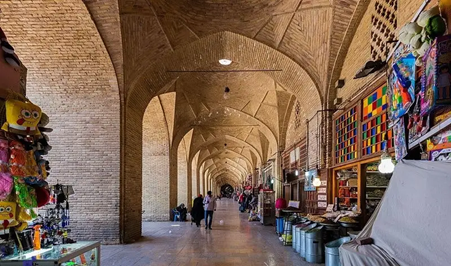
The bazaar’s sections, such as Chahar Souq, the Arg Bazaar, and the Vakil Complex, each hold their unique appeal, brimming with historical and architectural wonders. Visitors can indulge in a variety of local delicacies and crafts, including renowned Kermani spices, world-class pistachios, and exquisite copper products.
A visit to Kerman is incomplete without exploring its vibrant bazaars, where the essence of the city’s rich culture and craftsmanship is on full display. The city is renowned for its exquisite hand-woven carpets, a hallmark of Persian artistry. These carpets, known for their intricate designs and durability, are not just decorative items but pieces of history that you can take home. The designs often feature traditional motifs and a richness of color that reflect the soul of Kerman.
Another must-buy souvenir from Kerman is its world-famous pistachios. The region’s pistachios are renowned for their unique flavour and are considered among the best in the world. They make for a delightful and healthy snack or a thoughtful gift for loved ones.
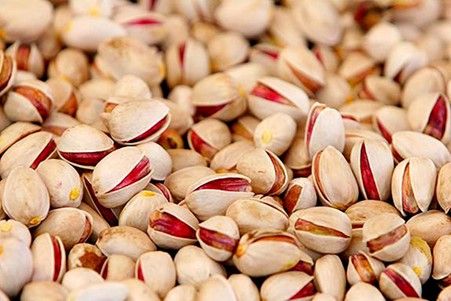
For those interested in spices, Kerman’s cumin is unmatched. The spice is known for its strong aroma and is a staple in many Persian dishes. It will bring the taste of Iran to your kitchen.
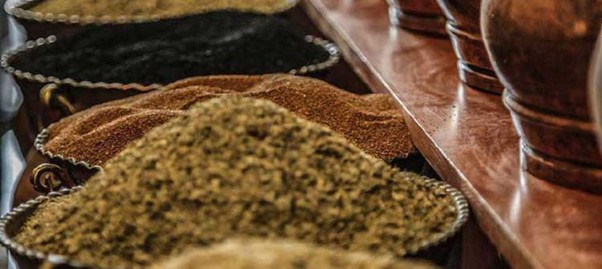
Don’t forget to explore the copper bazaars of Kerman, where artisans skilfully craft traditional copperware. These items range from intricate decorative pieces to functional cookware, each bearing the mark of Kerman’s age-old metalworking tradition.
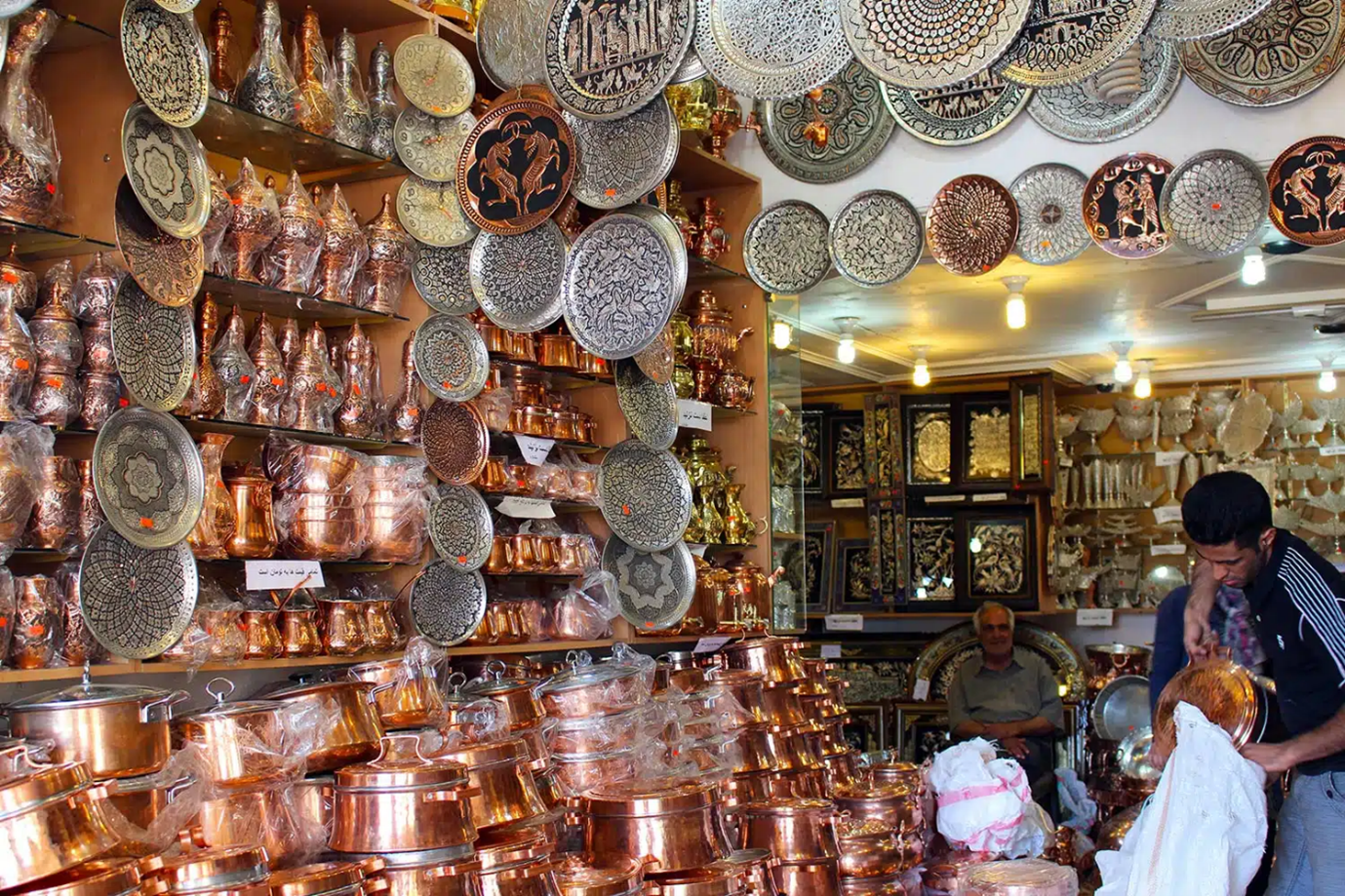
Kerman is well-connected and accessible through various means of transportation, making it a convenient destination for travelers. The Kerman International Airport serves both domestic and international flights, providing a direct route for visitors coming from afar. The airport is well-equipped with facilities and is located conveniently close to the city center.
For those who prefer a scenic journey, traveling to Kerman by road is an excellent option. The highways and roads leading to Kerman are well-maintained, offering a comfortable drive. This route also allows visitors to experience the picturesque landscapes of Iran, from mountains to deserts, along the way.
Additionally, Kerman is connected by Iran’s extensive railway network. Train travel offers a unique and relaxed way to reach the city, with the added benefit of scenic views of the countryside. The trains are equipped with various amenities, ensuring a comfortable journey.
Kerman, a city of rich history and breathtaking landscapes, beckons travelers with its unique blend of cultural and natural wonders. From the weather that offers a diverse range of experiences across seasons, to the UNESCO World Heritage Sites that whisper tales of ancient civilizations, Kerman is a mosaic of heritage and beauty. The city’s natural attractions, like the Lut Desert and Rayen Castle, promise adventure and awe, while its culinary offerings provide a taste of authentic Persian cuisine. Whether you’re exploring local bazaars for exquisite souvenirs or navigating through the convenient transportation options, every aspect of Kerman contributes to an unforgettable journey. With comfortable accommodations catering to various preferences, Kerman is not just a destination but an experience waiting to be cherished. So, pack your bags and set off on a voyage to Kerman, where every season unfolds new stories and every corner holds a promise of discovery.
Kerman offers a variety of accommodation options to suit every preference and budget. From luxurious hotels to budget-friendly hostels, the city caters to all types of travelers.
For those seeking luxury, Kerman’s high-end hotels offer exquisite rooms, top-notch amenities, and exceptional service. These hotels often feature traditional Persian architecture and decor, providing an immersive cultural experience.
Budget travellers can opt for hostels or guesthouses, which offer comfortable and affordable accommodation. These establishments are ideal for meeting fellow travelers and experiencing local hospitality.
Many hotels and hostels are located near Kerman’s major attractions, making it convenient for visitors to explore the city. Whether you’re looking for a lavish stay or a cozy, budget-friendly option, Kerman has something to offer.
Kerman, steeped in history, is home to several UNESCO World Heritage Sites, each offering a window into Iran’s ancient civilization and architectural genius. The most prominent among these is the Arg-e Bam (Bam Citadel), the world’s largest adobe structure. This historic fortress-city dates back to the Achaemenid Empire (6th to 4th centuries BC) and has withstood the test of time, telling tales of resilience and architectural innovation.
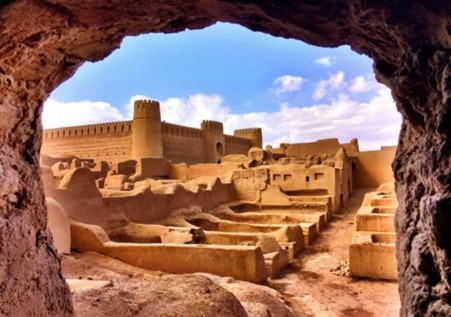
The Citadel, situated on the Silk Road, was once a thriving center of trade and cultural exchange. Walking through its ancient walls, visitors can imagine the bustling life of the past, with caravans arriving from distant lands, bringing with them goods and stories. The earthquake of 2003 heavily damaged the Citadel, but restoration efforts have brought back much of its former glory, making it a must-visit site for history buffs.
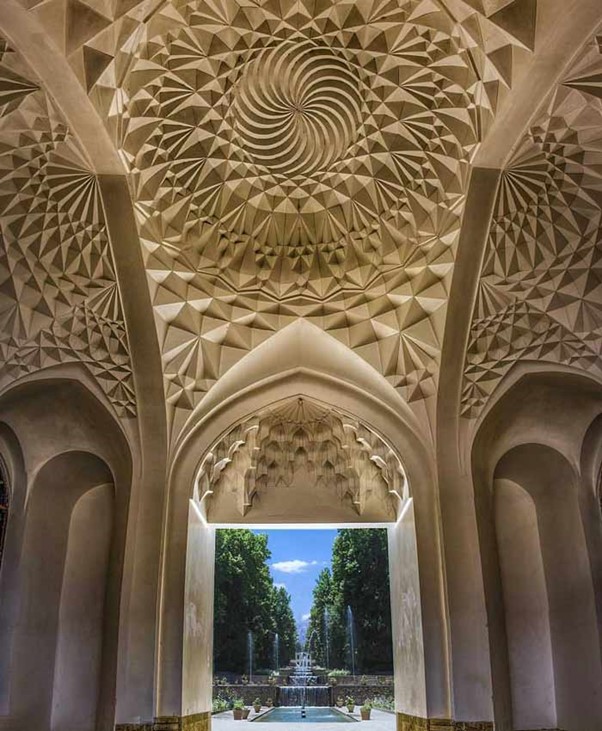
Another UNESCO treasure in Kerman is the Shahzadeh Garden, a masterpiece of Persian garden design. This historical garden, located in Mahan near Kerman, is known for its stunning symmetrical design, flowing water features, and lush greenery. It’s an embodiment of the Persian concept of a paradise garden and offers a tranquil escape from the city’s hustle and bustle. Covering over 5 hectares, the garden’s layout is a visual delight, with a mansion, water structures, and a tree-lined fence. The central mansion, once a royal residence, is transforming into a restaurant, complementing the serene garden atmosphere.
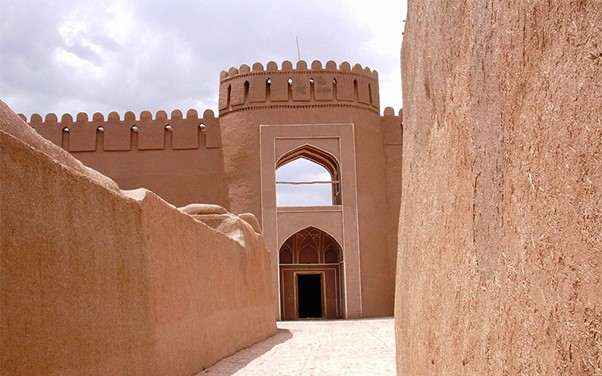
Arg-e Rayen, the world’s second-largest adobe castle, is a marvel of historical architecture located in central Iran. Its origins trace back to the Sassanid era, proudly standing on the skirts of Hezar Mountain in Kerman province. The castle’s strategic location on major trade routes once made it a bustling hub for merchants, particularly in the textile trade.
The name ‘Rayen’ not only refers to its meaning as ‘aqueduct’ but also honors a notable commander of the Sassanid dynasty. The castle’s current form has evolved over centuries, built upon the ruins of an older fortress and undergoing numerous renovations. It was once a center for metalwork, producing swords, guns, and other metal items, some of which continue to be crafted at workshops near the entrance.
Rayen Castle comprises three distinct sections, reflecting the societal divisions of its time. It includes two- and three-story residential buildings, administrative areas, and exclusive sections for the upper class, separated by towers and walls. Notable features include watchtowers for security, schools, a mosque, and a fire temple, which was converted to a Zurkhaneh (traditional gymnasium) to respect the Muslim inhabitants.
The natural beauty surrounding Kerman is as compelling as its historical and cultural attractions. The Lut Desert, a UNESCO World Heritage Site, is a must-visit for nature lovers. Known for its surreal landscapes, including the famous Kaluts (yardang formations), the desert offers an otherworldly experience, especially during sunrise or sunset when the colors of the sand dunes change dramatically.
The Shahdad Desert, part of the Lut Desert, is home to some of the hottest surface temperatures recorded on Earth. Its unique natural formations and star-filled night skies make it an ideal spot for adventure and astrotourism.
For those seeking a peaceful retreat, the Mahan’s Shazdeh Garden, a historical Persian garden near Kerman, offers a serene environment. With its beautiful water fountains, terraced layout, and lush greenery, the garden is a testament to the ancient Persian art of garden design.
The Jebal Barez Mountains are another natural wonder near Kerman. These mountains offer stunning views, hiking trails, and the opportunity to witness the diverse flora and fauna of the region. The area is also known for its hot springs, which are believed to have therapeutic properties.
Kerman’s culinary landscape is a delightful fusion of traditional Persian flavors and local ingredients, offering an array of dishes that tantalize the taste buds. One of the signature dishes of the region is “Bozghormeh,” a unique stew made with lamb, chickpeas, and a variety of herbs and spices. This hearty dish is a staple in local cuisine and is a must-try for visitors.
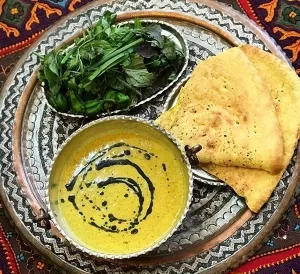
Zireh Polo, or Cumin Rice, is a standout dish in Kerman’s culinary repertoire. Infused with a mix of cumin seeds, saffron, and other aromatic spices, this basmati rice dish can be enjoyed with lamb, chicken, or as a vegan dish. It’s often served with creamy yogurt, pickles, and fresh herbs, providing a harmonious blend of warm, aromatic flavors and refreshing undertones.
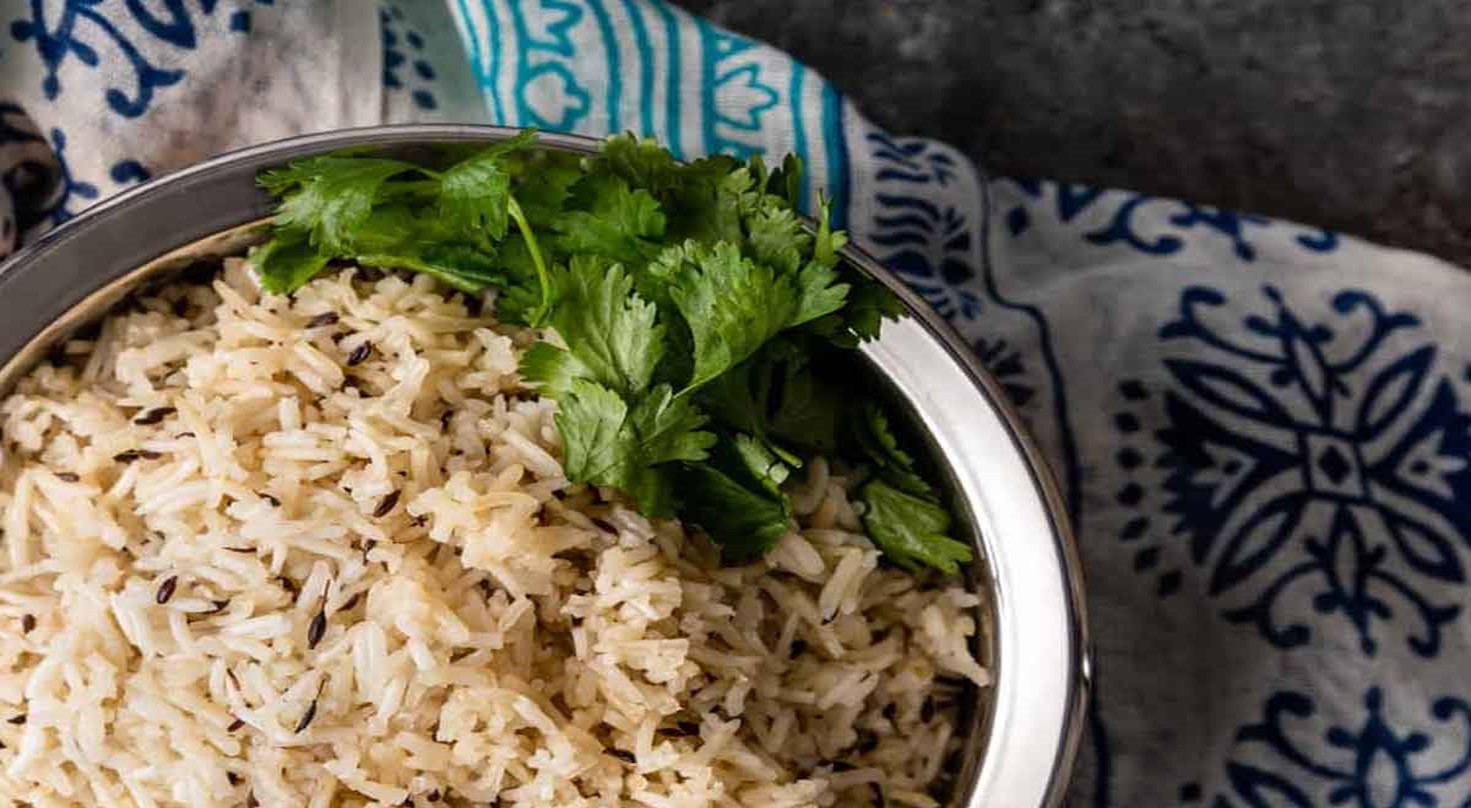
Kebabs in Kerman are also not to be missed. From the classic “Koobideh” (minced meat kebab) to the “Joojeh” (grilled chicken kebab), each offers a distinct flavor, usually served with saffron-infused rice or local bread. The city’s kebabs are known for their tenderness and rich seasoning, making them a favorite among both locals and tourists.
Ash-e Kermani, a substantial and nourishing soup, is another pillar of Kerman’s cuisine. This thick soup, made from a blend of legumes, herbs, vegetables, and sometimes meat, is a testament to the region’s ability to create deeply flavorful and satisfying meals. The addition of crispy onions, mint leaves, and lemon juice adds a zesty twist, making it a beloved comfort food
Kerman is also known for its variety of Abgooshts, traditional Iranian stews, each with a unique local twist. Boz Ghormeh, Kashk Badenjan, and Montanjeneh are among the popular varieties in Kerman, embodying the region’s rich culinary traditions and distinctive flavors.
Kaleh Joosh, a simple yet beloved dish, is a testament to Kerman’s rich culinary history. This dish, made with curd, tomatoes, dried vegetables, and aromatic herbs, represents the simplicity and depth of flavor characteristic of Kermani cuisine
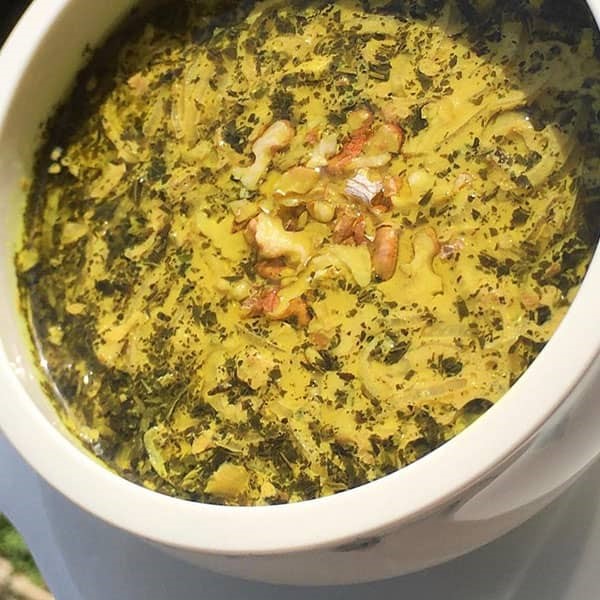
Kerman’s desserts are equally impressive, offering a sweet conclusion to its rich culinary journey. From the moist and fragrant Kermani Cake to the delicate sweetness of Kolompeh, a pastry filled with dates and spices, these desserts are a testament to the region’s mastery in creating indulgent treats that captivate the senses.
For a sweet treat, “Kolompeh” is a traditional Kermani cookie, filled with dates and flavored with cardamom. Kolompeh, in particular, stands out as a popular dessert, often accompanied by tea or coffee, adding a sweet touch to a leisurely afternoon. These cookies are not only delicious but also tell a story of Kerman’s culinary traditions. Baqlava, a rich pastry made with layers of filo dough, nuts, and syrup, and Bastani Kermani, a saffron-infused ice cream, are other notable sweet treats from the region. They make for a perfect snack while exploring the city or a delightful souvenir to take back home.
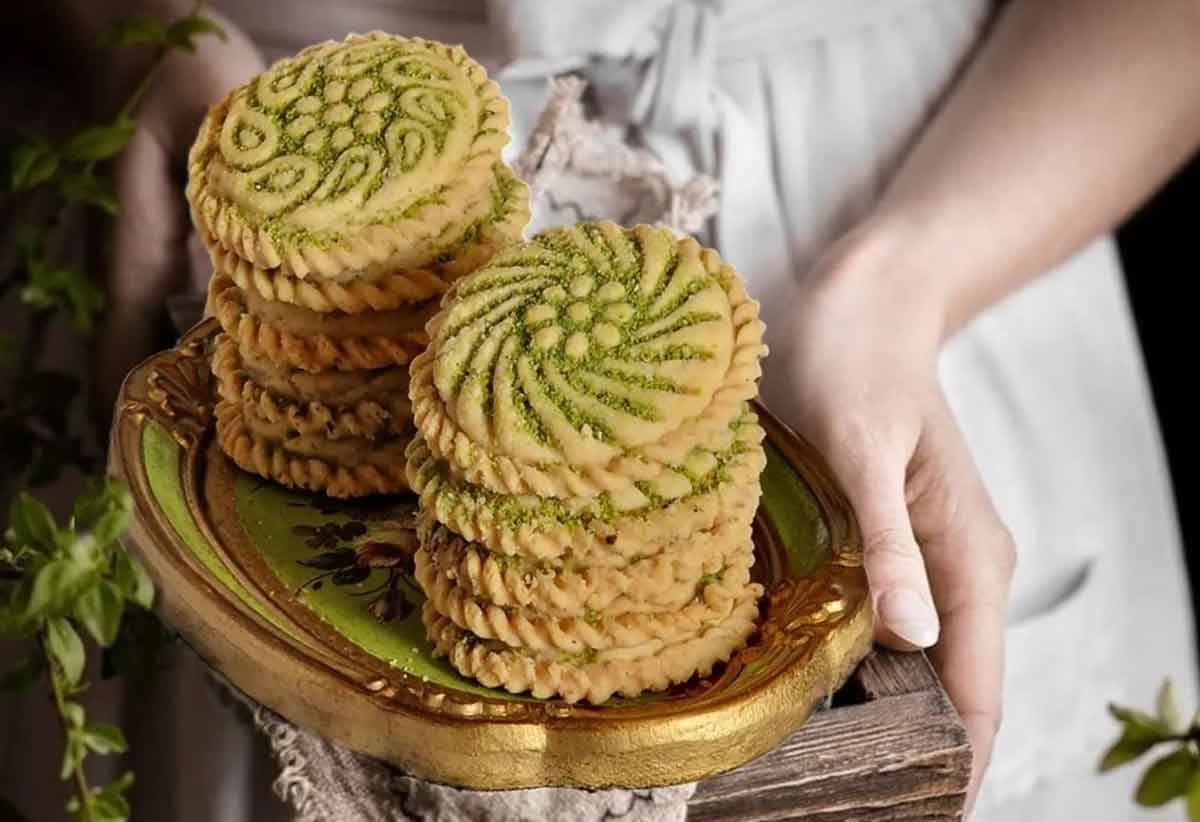
Do not miss the opportunity to try “Carrot Halva,” a local dessert made from carrots, sugar, rosewater, and cardamom. This dessert is a unique Kermani delicacy, offering a sweet and aromatic end to any meal. Halva pistachio, Kachi, and Ghovatou, traditional and ancient sweets, reflect the deep-rooted culinary heritage of Kerman, offering unique flavors and textures that are deeply ingrained in the local culture.